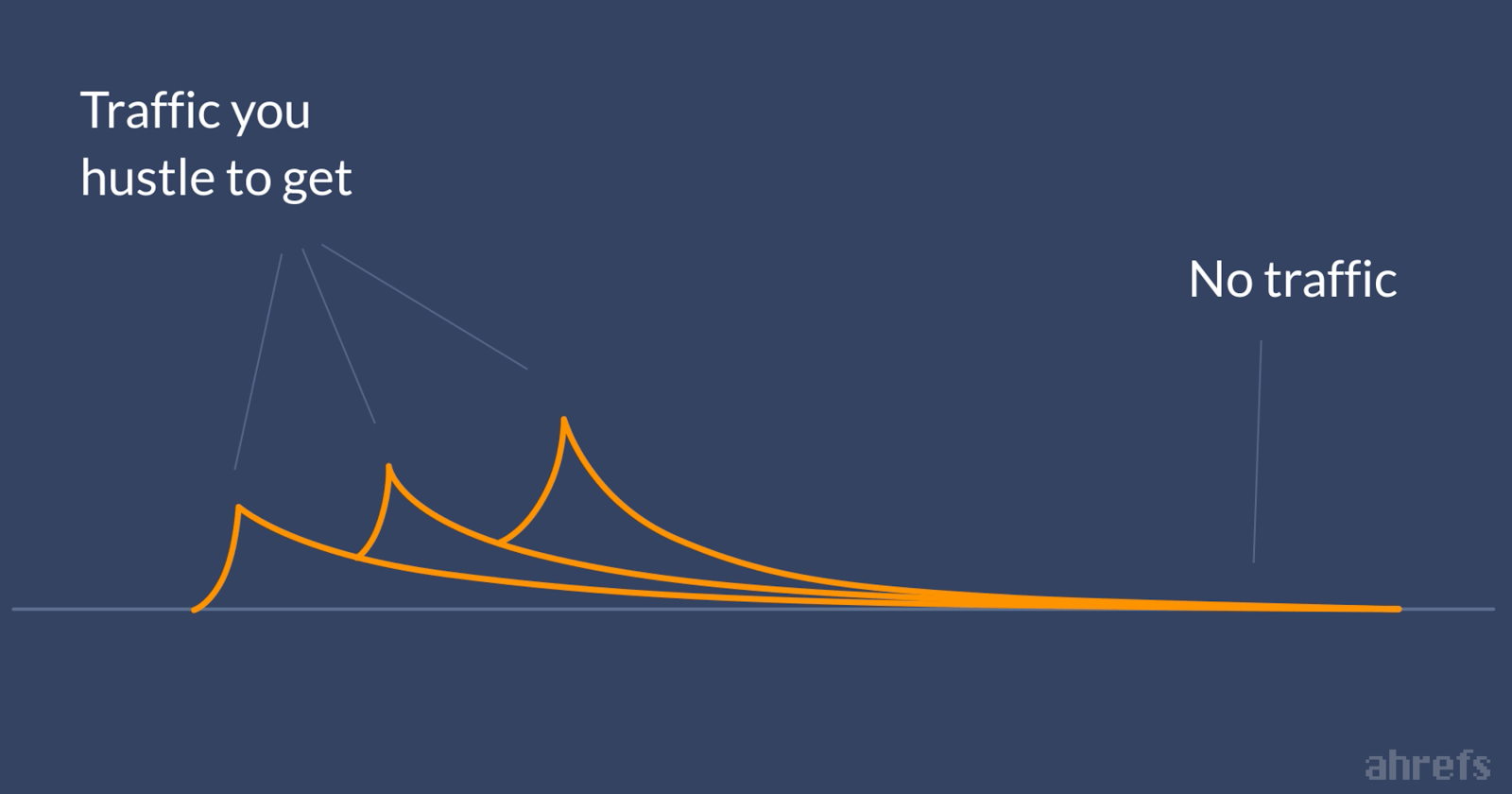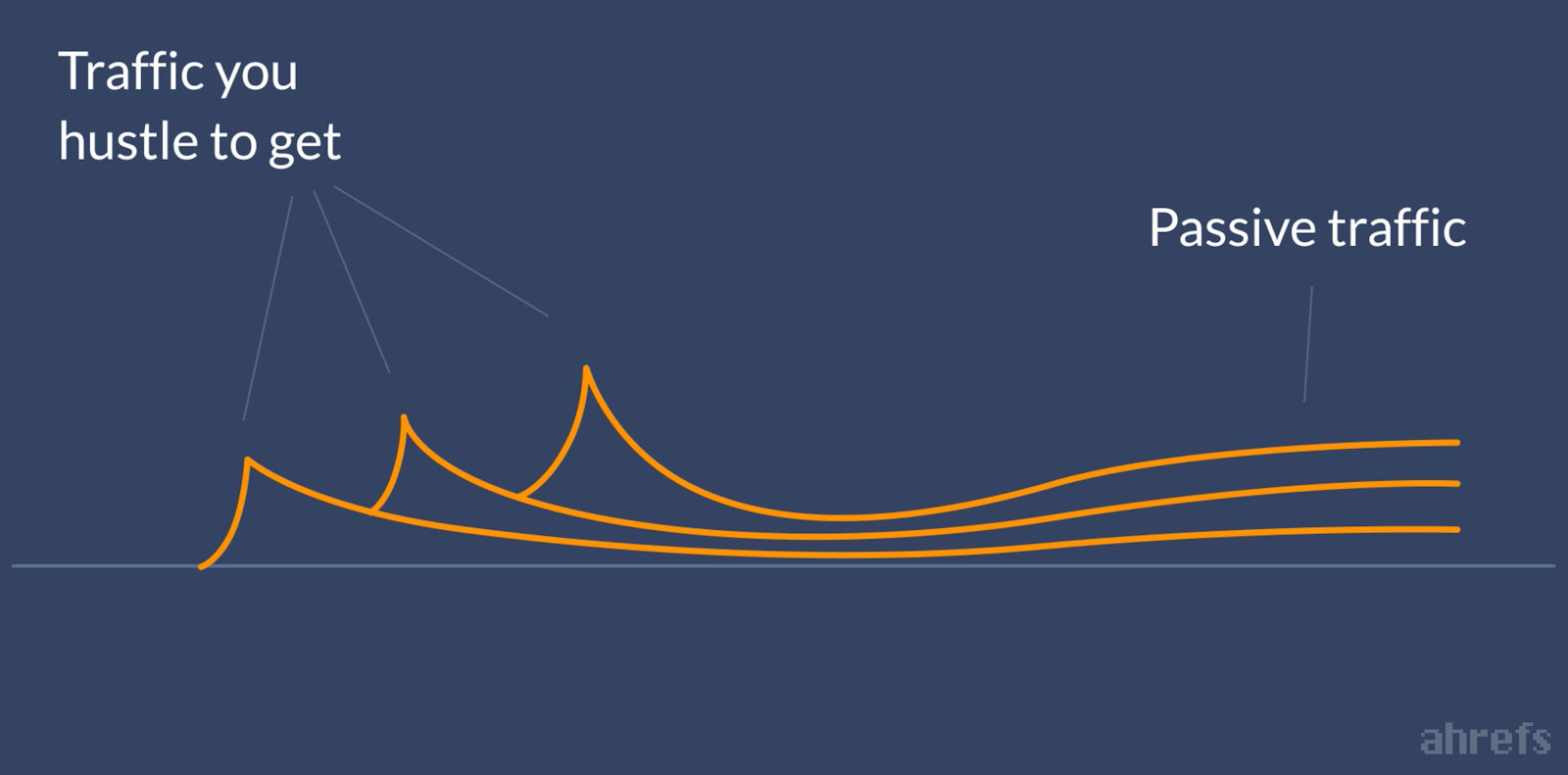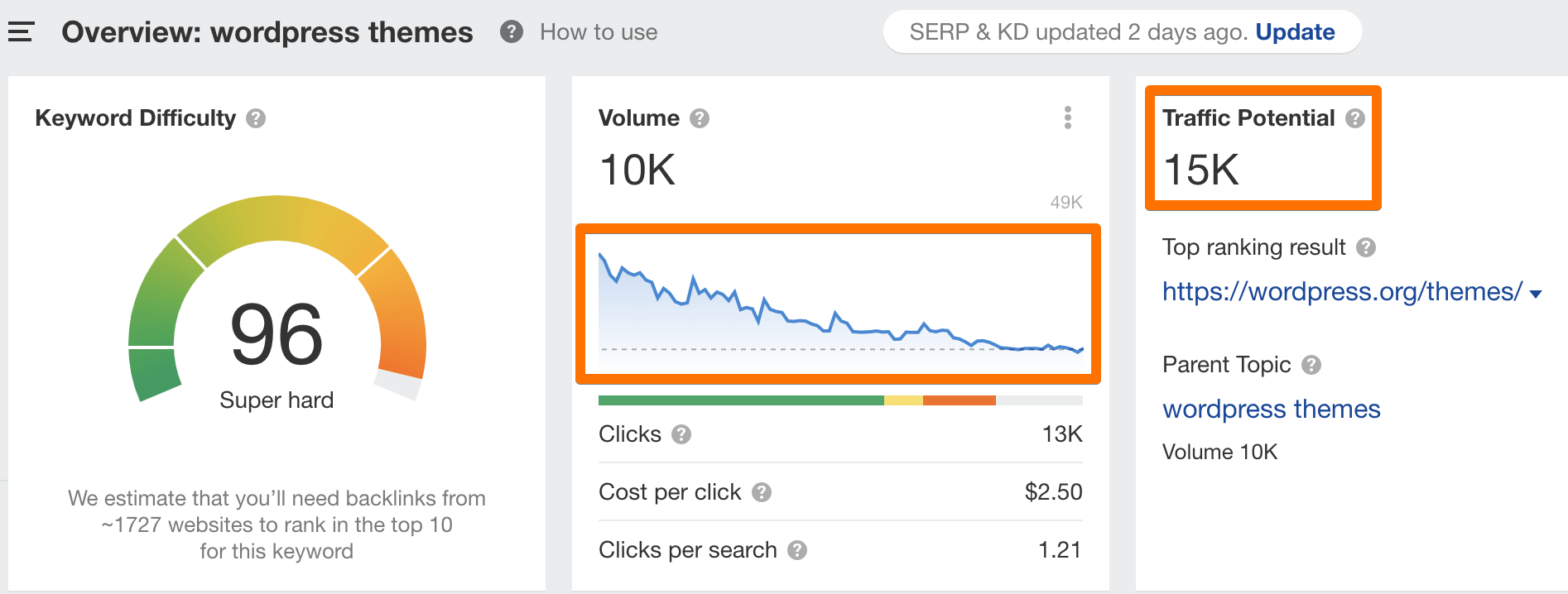Evergreen Content
What is Evergreen Content?
Evergreen content is search-optimized content on topics that stay relevant for a very long time.
Here are some examples of evergreen topics:
- How to take a screenshot on a mac
- Delete Instagram account
- Iron-rich foods
Why is evergreen content important?
Evergreen content is important because it can remain relevant long after it’s posted. Quality evergreen content can create a consistent flow of traffic month over month.
The newly published piece of content typically gets what we call “a spike of hope” as people discover it from your newsletter and social shares. But then the interest fades into the “flatline of nope.”

Evergreen, SEO-driven content, on the other hand, can attract organic traffic from Google search month after month—without seeing a drastic decline in traffic after a week or two.

However, creating evergreen content and ranking it on Google is neither easy nor cheap.
Typically, the top-ranking search results for evergreen queries belong to well-established websites and older articles with strong backlink profiles. This means that even the most outstanding content needs promotion and link-building to start ranking high.
How to find evergreen topics?
Find keywords with a steady trend over time
The interest in an evergreen topic shouldn’t change as time passes (ideally, the trend should grow). To check this, look at the trends graph in Keywords Explorer. For example, the topic “WordPress themes” still has a good traffic potential but continues to drop in popularity over time:

And the searchers’ interest in “website builders” is steady.

2. Find pages with a steady flow of traffic
When looking for evergreen topics, you can also look at your competitors’ pages. Look for those that have a consistent flow of organic traffic.
In Site Explorer, open the Top pages report for your competitor’s domain to see the pages getting the highest amount of traffic. Then open the Overview report for the relevant page.
Here’s an example:

Ahrefs monitors hundreds of millions of keywords, so we have enough coverage to paint an accurate picture of organic search traffic over time.
How to create evergreen content?
Evergreen topics are very competitive, meaning your content must be better than the top-ranking results. Besides, you’ll need to invest time and energy into promotion and link-building.
The best approach to creating evergreen content is 10x content. Your content should be ten times better than the top-ranking content across all areas, including usefulness, uniqueness, design, and authority.
How to maintain your evergreen content
1. Refresh your content regularly
Although the core of evergreen content will most likely remain unchanged, it’s good SEO practice to ensure that your content stays up-to-date and relevant.
Here’s an example from Techradar. The title of the page is “Best SEO tools of 2022,” but according to Ahrefs Site Explorer, it was first published in 2019. Then it was updated regularly.

2. Track your rankings
To ensure your evergreen content continues to rank, it’s important to track its performance using rank-tracking tools like our Rank Tracker. When you notice your content starts to lose its ranking positions, you’ll know it’s time to update and improve your existing evergreen content.
3. Build links
Linking building is even more important for evergreen content because of the competition on SERPs. As other websites try to outrank you, a strong link-building strategy will help to drive traffic and keep your content relevant.